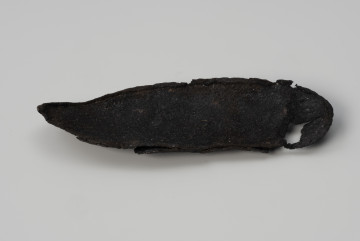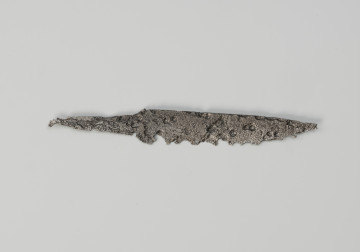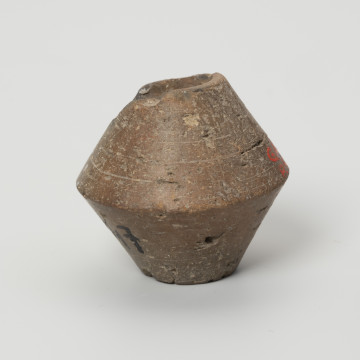
Sole
900 — 1100
National Museum in Szczecin
Part of the collection: Middle Ages
Early medieval weaving was a seasonal occupation, usually carried out in winter, during the period when there was no agricultural work. Traditionally, the production of yarn and fabric has been attributed to women. The basic raw textile material of plant origin was flax, while of animal origin was sheep's wool, which was most suitable for spinning. There are even opinions from experienced spinners that dirty and oily fleeces spin much easier than fleeces that have been washed and rinsed several times. Sometimes, therefore, only larger contaminants were removed. A spindle loaded with a clay or stone spinner was used to make yarn. Until recently, spindles were used in the villages to prepare thread for repairing sacks and sheets, as they were considered to be stronger and better suited to all kinds of repairs. Spindles were made from clay or soft rock materials, and possibly also from amber. They are most often barrel or biconical in shape. Pieces made of rock are often flat, such as the spindle whorl from Dopropol. Decoration with simple motifs, such as engraved lines and circles or punctures, depended on the sense of aesthetics of the maker and user. It is sometimes thought that the ornamentation was a kind of signature of the maker or user. Anna B. Kowalska
Object type
spindle whorl
Technique
turning (machining), grinding
Material
stone
Origin / acquisition method
legal transfer
Creation time / dating
Creation / finding place
Owner
Muzeum Narodowe w Szczecinie
Identification number
Location / status

900 — 1100
National Museum in Szczecin

551 — 700
National Museum in Szczecin

951 — 1200
National Museum in Szczecin
DISCOVER this TOPIC
National Museum in Szczecin
DISCOVER this PATH
Educational path